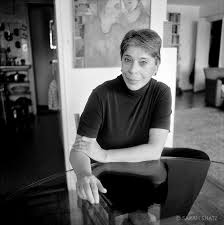A lesson I learned as a drummer: one show is worth ten or twenty rehearsals. The presence of an audience raises my critical awareness to a place higher than where it had been in rehearsal.
I noticed this, too, as a songwriter. Only at the moment of handing off a demo to a listener would I realize "Damn, I never figured out the bridge." Handing over work and getting in front of an audience raises the stakes and our attention.
Artist workshops, where fellow artists exchange and comment upon each other's work, provide an opportunity to share one's work regularly and to learn from that sharing. As a writing teacher who works in the workshop format, I can say that most of what the students learn doesn't come from the other students or their professor; it comes by way of their deepened connection to their artistic intuition.
In The Situation and the Story: The Art of Personal Narrative, Vivian Gornick describes how she teaches her writing students:
". . . I have learned that you cannot teach people how to write—the gift of dramatic expressiveness, of a natural sense of structure, of making language sink down beneath the surface of description, all that is inborn, cannot be taught—but you can teach people how to read, how to develop judgment about a piece of writing: their own as well as that of others. You can teach them how to puzzle out the experience buried in a mass of material and to see whether it is being shaped on the page; how to search out the link between a narrative line and the wisdom that compels it; how to ask, Who is speaking, what is being said, and what is the relation between the two? . . ."
Vivian Gornick, The Situation and the Story, pp. 159-160
I have adopted Gornick’s approach and found that it contains great wisdom. When students become better readers, they learn to read their own writing and see its problems and potential. They begin to understand, for instance that . . .
Good writing is aware of the reader.
It seems like an obvious fact, but many writers lose sight of it. They become absorbed with getting their thoughts onto the page, which is hard enough. Encountering work by others, especially work by fellow students who are still figuring things out, they become more attuned to the fact that a reader will have to pick up their writing and make sense of it.
Good writing trains the reader how to read it.
This question is invisible to many writing students. A student may not yet have realized that her essay about her travels in Croatia could be read as a portrait of Croatia, but also as a story of the dissolution of a relationship with her travel companion, or a story of finding a sense of mission in life, or a story about realizing what she left behind at home. She herself might have had clear intentions, but she hasn't yet learned that the writing didn't help her readers intuit those intentions. By reading and critiquing work by her fellow students, where similar problems hover over the page, she is more likely to attend to the problems her readers might have.
Good writing knows the difference between a portrait of confusion and a confused portrait.
Many writers want to capture the sense of being muddled, unclear, lost, and so forth. Only after reading successful (and unsuccessful) pieces by other writers do students come to realize how much clarity is needed to portray the lack of clarity they hope to capture.
These are only a few examples of how the act of critically engaging work by others puts an artist in conversation with her intuition, a lifelong source of her learning.























